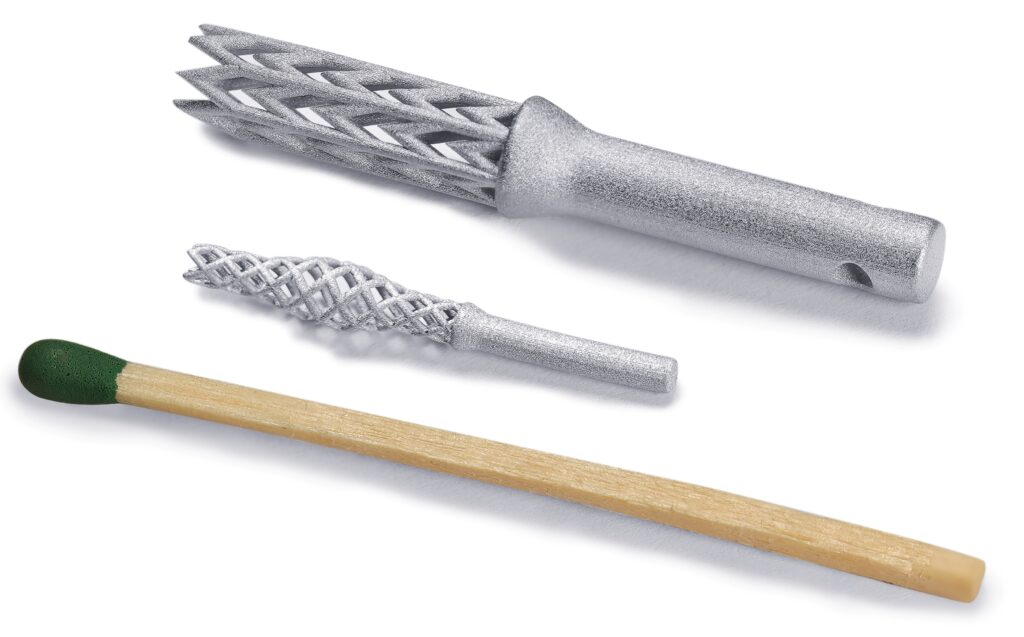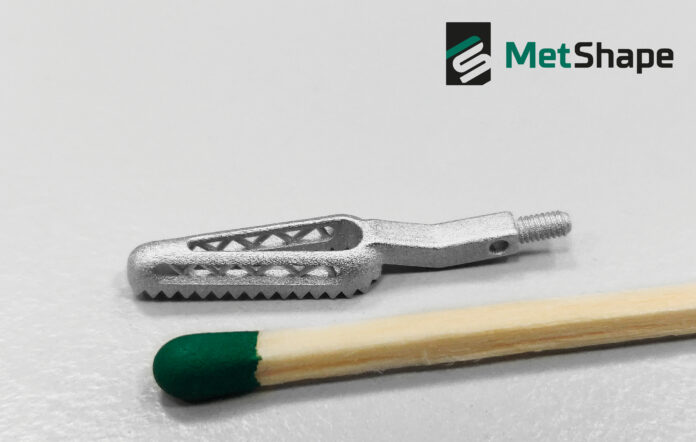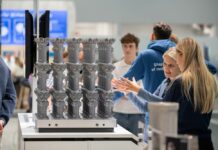Founded in 2019, MetShape turned stealth mode off when it secured seed financing from AM Ventures. The fund raising received a lot of hype as it was the first public announcement made by AM Ventures since the latter had opened a 100-Million-Euro Venture Capital Fund to further support AM companies.
The story goes that MetShape’s journey started at the Hochschule Pforzheim as part of a project that focused on the recycling of magnets. While the results were not what was expected, the project revealed the potential of LMM technology – the manufacturing process used within the project -for the production of high-precision metal components with very good surfaces.
Today, MetShape operates as a 3D printing service provider within the industry, and amid the wide range of service providers the industry abounds with, MetShape is really one of its kind.
The company is so far one of the rare companies that has dedicated its core business to delivering services with only one manufacturing process: lithography-based metal manufacturing (LMM). LMM has been developed by Incus GmbH, a spin-off of Lithoz while MetShape is a spin-off of the Institute for Precious and Technology Metals at Pforzheim University.
“We specialize in the production of 3D printed metal components using the LMM technology and have developed ourselves as an expert in sintering. In addition to the production of prototypes and small series, we offer full-service application development and develop new materials for sinter-based AM. This qualifies us as a specialist in the industrial production of high-precision small and micro metal components”, Mike Schimmelpfennig, Business Developer at MetShape states from the outset.
This expertise in thermal post-processing is crucial here as the heat treatment process is very well-known across manufacturing processes, but its utilization in AM processes has not always been satisfying. To acknowledge the potential of this step of manufacturing for MetShape, it’s crucial to understand why LMM is described as indirect AM process.
LMM, an indirect AM approach
Lithography‐based metal manufacturing (LMM) is a manufacturing process that enables the creation of advanced metal models, prototypes and production parts using the principle of photopolymerization, where metal powder is homogeneously dispersed in a light-sensitive resin and selectively polymerized by exposure with light.
“In the first step, the green part is printed from a photopolymeric binder system which is highly filled with metal powder. In a second step, the green part is debinded and sintered. This means the polymers, which are only needed as a temporary binder for printing purposes, are then removed either by solvent or heat and the resulting ‘brown compact’ is then sintered at high temperatures to fuse the powder particles together.The precise printing of green parts is essential for the production of a fully functional component part, but it is the sintering process that determines whether this part is dimensionally accurate and of high quality. That’s why we also place a huge focus on the sintering process and have developed ourselves as an expert in this area” Schimmelpfennig explains.

According to Incus GmbH, an industrial 3D printer relying on this approach turns 3D files into prototypes and small-scale production of components in MIM (metal injection moulding) quality, a manufacturing process that ensures that this quality includes superior feature resolution, surface aesthetics and mechanical properties for part sizes <200 g.
“We are convinced of the possibilities and numerous advantages the LMM technology offers and therefore we see great potential for many industrial applications. Moreover, we can offer extraordinary expertise as we were actively involved in the development process of the technology within our partner network.
In the future, our unique know-how in the debinding and sintering technology, which is the core know-how in all indirect additive manufacturing processes, offers the ideal foundation for us to expand our technology portfolio for the production of precise metal components”, the company’s representative adds.
Applications enabled by LMM

The medical & research fields have been the first vertical where we discovered MetShape’s expertise. As a reminder, the company supported the research work of CIC nanoGUNE – the Basque Nanoscience Cooperative Research Center – by 3D printing a high-precision virus model.
It should be noted that medical applications often involve the fabrication of small and micro metal components with high precision which can be achieved with sinter-based additive process – components which can be produced in small to medium annual production quantities (up to 10.000).
“The appropriate use of additive manufacturing technologies is linked to certain component characteristics and constraints which are fulfilled by a large number of medical technology products as they often have a need for complex geometries, high individualization and precision which is generally associated with low production volumes. Moreover, metal components that are used for medical technology are sometimes difficult to machine. This combination proposes a perfect field of application for the LMM technology and there are many applications that LMM is suitable for. Sinter-based AM with the LMM technology can be further used to manufacture complex and filigree tools and instruments, individual implants and even threads can be functionally printed. Additionally, I would like to state there are several applications that cannot be produced any other way with the same quality and precision. We also print a lot of prototypes for companies developing surgical instruments, tools or even implants. The great potential and uniqueness of our technology are confirmed by the fact we were approached by several partners for the same component part because they found no other supplier that was able to produce the requested part”, Schimmelpfennigoutlines.
When asked if LMM presents more opportunities for the medical field than any other vertical industry, Schimmelpfennig recalls that the use of 3D printing naturally depends above all on how open companies are towards new technologies. Moreover, he adds that, apart from medical applications, LMM can also be a great fit for other industries such as jewellery, mobility and security as well as high-frequency technology.
What’s the next step for the company?
LMM might be the only AM process used by MetShape right now. However, moving forward, we might expect the company to leverage other AM technologies which will be based on sintering technology. “These technologies offer many possibilities and accomplish precise results that direct AM procedures aren’t able to achieve due to for example the staircase-effect. What’s great about sinter-based technologies is that they all follow the same pattern”, the speaker concludes.
This interview has first been published in the May/June edition of 3D ADEPT Mag.
Remember, you can post jobopportunities in the AM Industry on 3D ADEPT Media free of charge or look for a job via our job board. Make sure to follow us on our social networks and subscribe to our weekly newsletter : Facebook, Twitter, LinkedIn & Instagram ! If you want to be featured in the next issue of our digital magazine or if you hear a story that needs to be heard, make sure to send it to contact@3dadept.com






